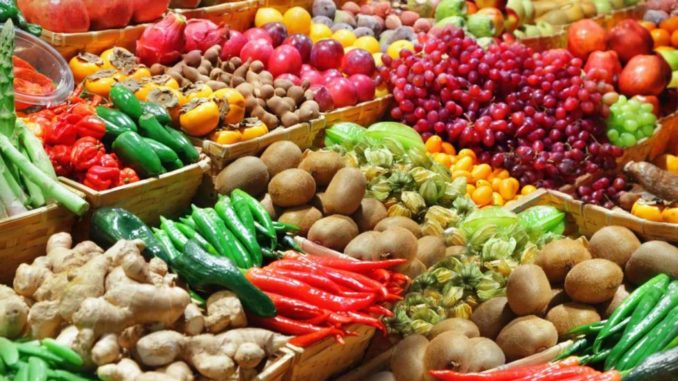
Data released by the National Bureau of Statistics (NBS) has shown that the consumer price index (CPI) which measures inflation increased by 12.26% in March.
An analysis of the report released by the bureau on Tuesday showed that Lagos witnessed a decrease in the general price of food items in March on a month-on-month basis.
The CPI increased by 0.06 percentage points from the 12.20% recorded in February.
“The composite food index rose by 14.98% in March 2020 compared to 14.90% in February 2020,” the report read.
“This rise in the food index was caused by increases in prices of bread, cereals, fish, potatoes, yam and other tubers, oils and fats, vegetables, and fruits.
“All items less farm produce or core inflation, which excludes the prices of volatile agricultural produce stood at 9.73% in March 2020, up by 0.3% when compared with 9.43% recorded in February 2020.”
Urban inflation increased by 12.93% in March from the 12.85% recorded in February and rural inflation was up 0.03 percentage points to stand at 11.64%.
“In March 2020, all items inflation on year on year basis was highest in Bauchi (15.55%), Niger (14.04%) and Kebbi (13.90%), while Lagos (10.82%), Abuja (10.19%) and Kwara (9.94%) recorded the slowest rise in headline year-on-year inflation,” the report read.
“In March 2020, food inflation on a year on year basis was highest in Sokoto (16.81%), Edo (16.63%) and Ogun (16.39%), while Jigawa (13.69%), Bauchi (13.40%) and Lagos (13.06%) recorded the slowest rise.
“On month on month basis, however, March 2020 food inflation was highest in Bayelsa (2.36%), Kogi (2.18%) and Kebbi (2.17%), while Kano (0.22%), Cross River (0.09%) recorded the slowest rise on month-on-month inflation with Lagos recorded price deflation or negative inflation (general decrease in the general price level of food or a negative food inflation rate).”
Economic activities have slowed in urban areas as a result of movement restrictions imposed to control the spread of the coronavirus.
Month-on-month basis means the movement in prices are compared to those recorded in the previous month while year-on-year basis means the comparison is done the same month of the previous year eg March 2019 vs March 2020
END

Be the first to comment